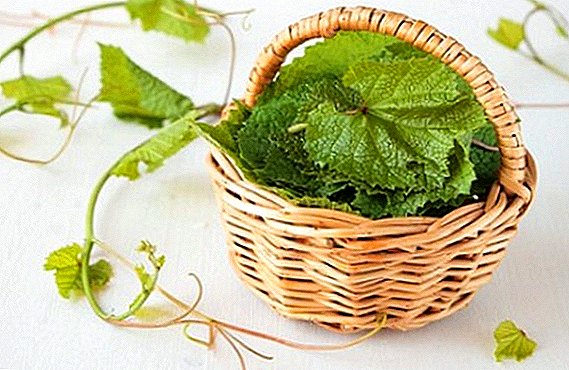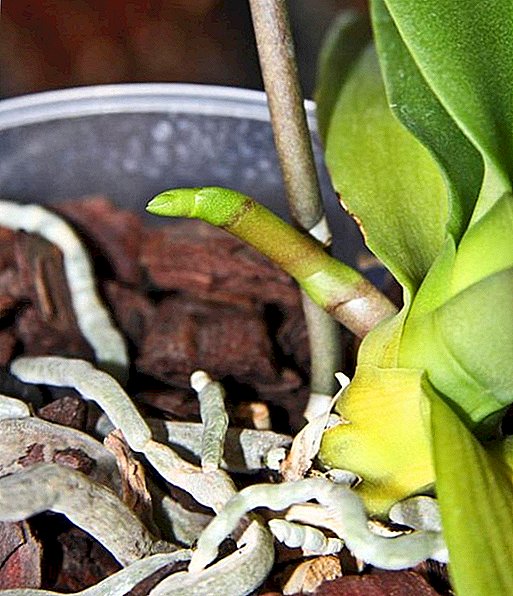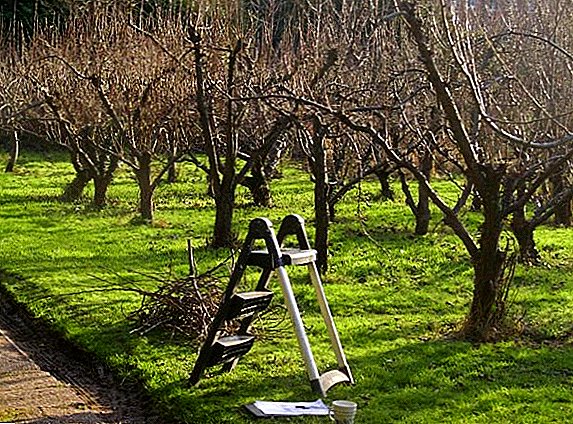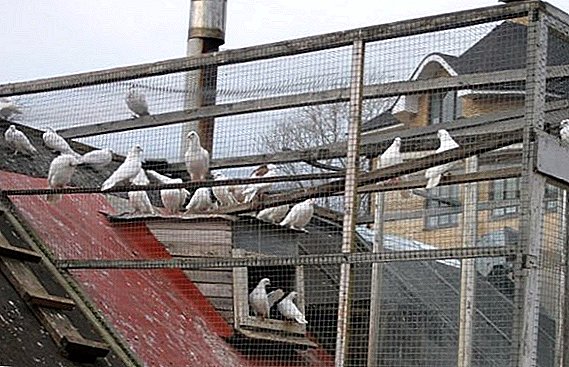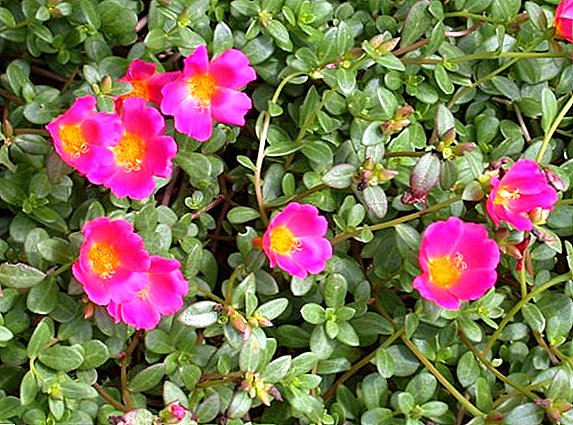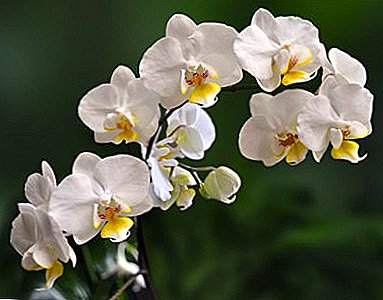
The growing popularity of flowers - orchids. Since this plant is heat-loving, it needs to organize a decent care in the autumn and winter.
You will need to create comfortable conditions for the orchid if you want this beauty to delight in its flowering on your window sill.
This is what the article will be about. Next, we will give step-by-step instructions for the care of orchids and tell you what difficulties orchid lovers can face.
Life cycle features
- In the autumn. When autumn comes, the plant begins to prepare for flowering. Each variety has its own duration of this period. Often flowering lasts from October to January. The buds are formed from the formed peduncle, and then completely bloom, showing the beauty of the flowers.
- In winter. In the cold season, the orchid hibernates. State of rest lasts until spring. It is characteristic of all orchids growing in apartment conditions. It is not recommended to disturb the flower during this period, otherwise it may not have time to fully rest, and this will adversely affect its flowering.
Step by step instructions on how to care
Do I need to rearrange the plant in the cold season?
In the fall, you should not carry the plant anywhere, but in the month of January, upon completion of flowering, it is rearranged into a room where there is no bright light and it is well shaded. In such a place, the orchid will rest and gain strength (for information on where to place and where it is impossible to keep an orchid, read here).
Do you need a special feed?
In winter, the flower is at rest, so there is no need to fertilize. But how to care with the help of feeding your pet in the month of October? In October, fertilizing is used according to the standard scheme - nutrients are introduced every second watering. During this period it is very important to feed with fertilizers containing potassium and phosphorus.
Temperature
In winter and autumn, it is necessary to maintain an optimum air temperature of +15 degrees at night and about + 23 ... +24 in the daytime. Differences of 5-7 degrees are allowed. They are even needed to create favorable conditions for planting flower buds.
Lighting
 In October, the sun's rays are not as hot as in summer, so the orchid is allowed to be kept on the windowsill, whose windows face south. Sometimes daylight is not enough for good flowering.. You have to extend it yourself. Light should be in for 12 hours.
In October, the sun's rays are not as hot as in summer, so the orchid is allowed to be kept on the windowsill, whose windows face south. Sometimes daylight is not enough for good flowering.. You have to extend it yourself. Light should be in for 12 hours.
Also, the lights will be required in the winter, when the plant comes a period of rest. The backlight can be arranged using special or ordinary fluorescent lamps.
Next, an informative video about orchid lighting in the winter months of the year:
Humidity
It increases due to spraying from a spray bottle or a container with water placed near the orchid pot.
There is an interesting and effective way to help increase moisture.:
- It is necessary to buy transparent pallets, with a height equal to one second from the pot.
- Holes are drilled from the side, and large pebbles lie at the bottom.
- Then water is poured into the trays.
- A plastic lattice is placed on top of the stones and a container with a flower is put on it.
Watering
With the onset of October, the irrigation regime is revised, as the temperature drops, especially at night. The soil will dry much more slowly, so watering is reduced. Frequent, abundant spraying and bathing plants are not allowed in autumn. This can lead to irreversible consequences. Watering in October is carried out once a week. In winter, it is further reduced, up to two or three times a month.
Do I need a transplant?
In winter, any transplants are prohibited. The only time when you can have time to transplant an orchid is in October.
Read more about the secrets and intricacies of caring for orchids at home, in our material.
How to transport a flower?
In order for a flower to tolerate such a procedure, it is necessary to know some nuances.:
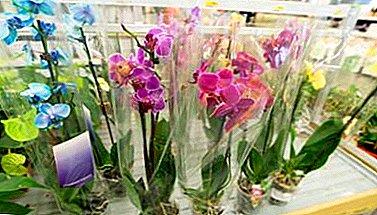 If the orchid needs to be transported, and the temperature has dropped to 0 degrees, it is wrapped in a double layer of paper, making a kind of package. At -5 degrees, you will need not only paper, but also polyethylene. If it is about -10 outside, then the laminate substrate is additionally used. The orchid is wrapped with auxiliary means and fixed with a stapler.
If the orchid needs to be transported, and the temperature has dropped to 0 degrees, it is wrapped in a double layer of paper, making a kind of package. At -5 degrees, you will need not only paper, but also polyethylene. If it is about -10 outside, then the laminate substrate is additionally used. The orchid is wrapped with auxiliary means and fixed with a stapler.- In severe frosts, the plant is shrouded in padding and packaged in a plastic bag. Thanks to the multilayer packaging, a thermos effect is formed.
- After the orchid is in the room, in no case can not immediately disclose - it will be a shock to the flower. In order to get used to the new temperature indicators, the orchid is left alone for 30 minutes.
Important! The flower is a heat-loving plant, so you should not stay in the cold for long.
We offer a visual video on how to prepare an orchid for transportation during the cold season:
Problems and difficulties
When growing an orchid at home, the florist may encounter the following problems:
- Pests. The most common problem. To prevent the occurrence of insects, it is necessary to do the prevention in time, which consists in frequent rubbing of the leaves (up to 5 times a day) and timely transplanting.
- The plant does not bloom. This problem often occurs in the fall. In order for the orchid to bloom, you need a bright and diffused light, the application of fertilizers containing potassium and phosphorus, a temperature that will vary day and night.
- Bad light can lead to the fact that the leaves will be small and sluggish, the orchid will stop throwing out the peduncle. Experienced growers recommend buying a fitolampa and turn it on on short light days. This will help the flower to remain in its usual conditions.
Common mistakes florist ways to solve them
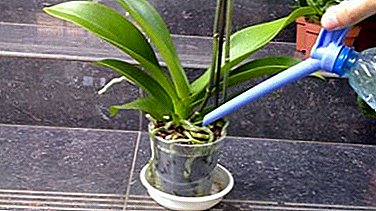 Wrong watering. Often it happens that the water did not have time to drain from the drainage hole, and the plant is already returned to the place with a tray into which the fluid continues to drain. If the window sill is cold, the water will become the same temperature and the root system will get supercooling. This will contribute to the development of fungal and bacterial diseases.
Wrong watering. Often it happens that the water did not have time to drain from the drainage hole, and the plant is already returned to the place with a tray into which the fluid continues to drain. If the window sill is cold, the water will become the same temperature and the root system will get supercooling. This will contribute to the development of fungal and bacterial diseases.To avoid such mistakes, it is worth putting a piece of foam on the window sill, and putting a pot on top. The foam will serve as a heat insulator, which will not allow the water to cool, and the roots to rot.
- Bad place. With high temperatures, in September and October, it is not necessary to put an orchid on the window sill, whose windows face south, as such an action will lead to burns. Perfect western and eastern window sills.
- Excessively high temperature. A flower has heat strokes. This results in intense heat and low humidity. The first symptom is soft and sluggish foliage. In winter and autumn it is strictly forbidden to place an orchid near batteries. To reduce the performance, you can use a fan or air conditioning. Ventilate the room, but avoiding drafts.
- Improper spraying. No need to sprinkle all day. Moisture will not have time to evaporate and will begin to concentrate at the point of growth, and this will lead to decay. After some time, the outer part of the leaves will turn yellow and fall off.
It is important to care for orchids at any time of the year, both in autumn, during flowering, and in winter, when it is at rest. This will prepare it for a new period and achieve a long, bright bloom. Since the orchid is a capricious flower, there are a lot of problems when caring for it. But it is important to timely detect and eliminate them.


 If the orchid needs to be transported, and the temperature has dropped to 0 degrees, it is wrapped in a double layer of paper, making a kind of package. At -5 degrees, you will need not only paper, but also polyethylene. If it is about -10 outside, then the laminate substrate is additionally used. The orchid is wrapped with auxiliary means and fixed with a stapler.
If the orchid needs to be transported, and the temperature has dropped to 0 degrees, it is wrapped in a double layer of paper, making a kind of package. At -5 degrees, you will need not only paper, but also polyethylene. If it is about -10 outside, then the laminate substrate is additionally used. The orchid is wrapped with auxiliary means and fixed with a stapler. Wrong watering. Often it happens that the water did not have time to drain from the drainage hole, and the plant is already returned to the place with a tray into which the fluid continues to drain. If the window sill is cold, the water will become the same temperature and the root system will get supercooling. This will contribute to the development of fungal and bacterial diseases.
Wrong watering. Often it happens that the water did not have time to drain from the drainage hole, and the plant is already returned to the place with a tray into which the fluid continues to drain. If the window sill is cold, the water will become the same temperature and the root system will get supercooling. This will contribute to the development of fungal and bacterial diseases.
